BluesFest 2011: Day 5 – Monday 25.04.2011
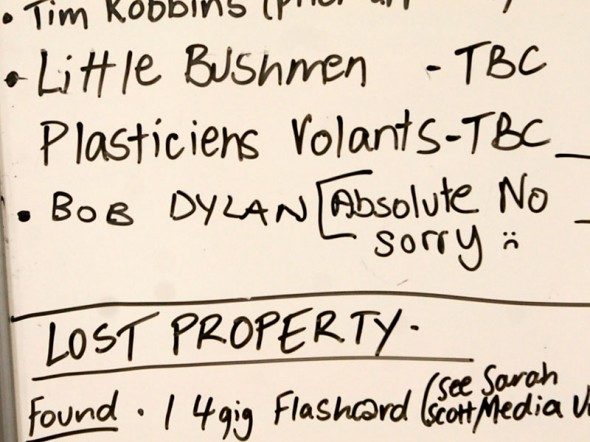
Monday is another day spent at the beach before an evening drive up to Tyagarah for the last few acts of the night; Jethro Tull, Bob Dylan and Elvis Costello.
Bob Dylan hasn’t allowed photographers in the photo pit for about 30 years so I know when I apply for accreditation that I’m not going to photograph Bob Dylan. It’s a shame because there’s so many iconic photos of him and he’s the subject of so many of my favourite photos; whether it be Barry Feinstein’s photos of him on tour in the mid 1960s, the classic studio shots, or all those iconic album covers and inlay photos – Freewheelin’, Blonde On Blonde, Highway 61 Revisited, Bringing It all Back Home – so many stunning images. Even the later albums – Time Out of Mind, Love and Theft and Modern Times – have some gorgeous photos in the CD booklets. And even at almost 70 he still looks amazing and still takes a great photo. But his rules and he’s upfront about them. I’d rather that than turn up on the day all excited and be told that I can’t photograph him.
It is one of the really memorable moments of the festival though, as people working backstage gather in the road that runs backstage between the two stages to watch him play. Some of the more prepared people have even put sofas on the back of their utes and have parked up to watch him play, whilst plenty of others are just stood around enjoying the moment with a drink in their hand. It will be one of the abiding memories of BluesFest 2011. However, the moment lasts less than half a song as the heavens decide to open and everyone runs for some shelter until the rain stops or at least subsides. I end up running to the nearest cover, which is the backstage Gibson tent and get to pass the rain shower admiring some very nice looking guitars. Shelter From The Storm, indeed. Then it’s time for Jethro Tull.
Not only are there once again so many photographers wanting to shoot Jethro Tull that we get divided up into three groups again, but the band have imposed their own restrictions and we can only photograph from the sides and not in front of the stage. It’s a similar restriction to that that used by The Cure, where apparently Robert Smith doesn’t want photographs that might show his chins in a bad light. Maybe it’s the same reasoning for Jethro Tull. With the middle of the photo pit out of bounds, the organisers send their own festival photographers over to the far side and also send over the ‘A List’ photographers of people that are either photographing for more important publications or who will be submitting photos to be published the following day. The ‘B List’ photographers get to share the right-hand side of the stage. I find myself in Group 3. After the first song finishes and Group 1 are escorted out of the pit, the remaining photographers shuffle up and I find myself close enough to take a few shots of lead singer Ian Anderson while I’m waiting for the third song to start. It’s a good job that I do rattle of a few shots as when it comes to Group 3’s song, it’s a song where Anderson plays a harmonica for most of the song instead of his more usual flute. It’s really disappointing as photographing Jethro Tull is all about getting the classic shot of Ian Anderson balancing on one leg, playing his flute, and Group 3 doesn’t get to see this. The space we’ve been given in the pit doesn’t help matters either as we’re all crammed in a tiny spot and can’t see much of the band other than Ian Anderson and guitarist Martin Barre: maybe that’s the real reason we’re only allowed to phonograph from the sides instead of having full access to the whole photo pit.
With the choice of seeing the rest of Tull’s set or heading back for more Bob Dylan, I take the Dylan option. Seeing him play it’s clear that his voice is totally shot. There’s no power in it and you can’t help but wonder having seen all those 60’s photos with him smoking whether that’s a contributing factor. Although his voice has been like this for as good decade at least, on record he can get away with it and certainly his albums of the last 15 or so years have been surprisingly good considering some of his 1980’s output. But in a live setting the delivery just isn’t there, it’s so croaky that each new song becomes a game of “guess the song” from the melody, given that the musical arrangement played by the rest of his band generally plays little resemblance to the original. But even with the Dylan croak there is something still worth seeing and hearing and even at a distance of 200 metres. Maybe it’s just that he does play some of my favourite Blood On The Tracks songs. Maybe just being in the presence of one of the greats is enough to give the occasion the gravitas. Maybe it’s because the two sets he’s playing at BluesFest are probably the last times I’ll get to see him – as he doesn’t allow photographers it’s not like I’m going to get a chance to photograph him (although if he ever wants to reconsider his photographer policy or even have a photographer tag along for any of the ‘Never-ending Tour’ I’m available) and I’m even more unlikely to get anything like a reviewer’s ticket. So I don’t know why but I enjoy it. It’s not the infamous 1966 ‘Royal Albert Hall’ show (which actually took place at the Manchester Free Trade Hall), wonderfully recorded for Volume 4 of his bootleg collection, with The Hawks providing a sublime musical backdrop and Dylan at the height of his 60s voice; it really is something, someone even, completely different. Some of the recent articles I’ve read about Dylan (written as part of the celebrations for his 70th birthday) have compared the 2011 version to a grizzly old blues singer and it’s a description that’s well founded.
Originally I wasn’t going to photograph him at all. if he doesn’t want to be photographed it’s ok with me. But standing there, even though it’s miles away from the stage, probably as good 200m, and the vantage point isn’t the best, I can’t help myself from taking a few photos. Even though they’re not exactly vying for portfolio space, I’m glad I did take a few shots. Sometimes I wonder about mega famous and mega wealth musicians and why they keep putting themselves through it all when they don’t really have to. It’s especially true of Dylan playing live considering the battering he often gets, even from the audience who have paid to see him, but he’s had that almost the whole length of his career. He looks happy and that’s good; I guess that’s why he does it.
It seems like strange billing to have Dylan play second to last and have Elvis Costello play after him. I get my one song, I can’t remember which on it was, probably either the second or third song and then stick around for another half a dozen or so songs. It’s a bit of a contrast to Dylan. Even though the post-punk sound long disappeared and got replaced with something far more refined and grown-up, it’s still a high energy performance that betrays his original roots. He’s playing a second show on the final night, this time before Dylan and over on the Crossroads stage so knowing that I’ll get to see a few more songs tomorrow, I call it a night.
Share this:
- Click to share on Facebook (Opens in new window)
- Click to share on Twitter (Opens in new window)
- Click to share on WhatsApp (Opens in new window)
- Click to share on Tumblr (Opens in new window)
- Click to share on Reddit (Opens in new window)
- Click to share on Pinterest (Opens in new window)
- Click to share on Pocket (Opens in new window)
- Click to share on LinkedIn (Opens in new window)
- Click to email a link to a friend (Opens in new window)
- Click to print (Opens in new window)
This entry was posted on Friday, June 3rd, 2011 at 10:00 am. It is filed under Music Photography and tagged with BluesFest 2011, BluesFest2011, Bob Dylan, Byron Bay, Elvis Costello, Ian Anderson, Jethro Tull, Justin Edwards, Martin Barre, Rave Magazine, Sony a700, Tyagarah Tea Tree Farm. You can follow any responses to this entry through the RSS 2.0 feed.
This site uses Akismet to reduce spam. Learn how your comment data is processed.
 Collapse Board
Collapse Board
- Игровой автомат 3 Lucky Rainbows
- Игровой автомат Hot Joker
- In Photos: Codeine + A Broken Sail + Plainer + Burn Before Reading @ Stranded, Brisbane, 14.04.2024
- The Collapse Board Interview: Kid Congo Powers
- The Collapse Board Interview: Tim Butler (The Psychedelic Furs)
- The Collapse Board Interview: Glen Matlock
- In Photos: Tropical Fuck Storm + C.O.F.F.I.N + Cool Sounds + Mod Con @ Triffid, Brisbane, 22.03.2024
- In Photos: The Damned + Hard-Ons @ The Tivoli, 20.03.2024
- In Photos: Drab Majesty + Franck Vigroux and Antoine Schmitt + Corin @ Ohm Festival, Brisbane, 14.02.2024
- The Collapse Board Interview: Erica Dunn (Tropical Fu*k Storm / Mod Con)
The Archives
- March 2017
- February 2017
- January 2017
- December 2016
- September 2016
- May 2016
- April 2016
- March 2016
- September 2015
- August 2015
- May 2015
- April 2015
- March 2015
- January 2015
- November 2014
- September 2014
- August 2014
- July 2014
- April 2014
- March 2014
- February 2014
- January 2014
- October 2013
- September 2013
- August 2013
- July 2013
- June 2013
- May 2013
- April 2013
- March 2013
- February 2013
- December 2012
- November 2012
- October 2012
- September 2012
- August 2012
- July 2012
- June 2012
- May 2012
- April 2012
- March 2012
- February 2012
- January 2012
- December 2011
- November 2011
- October 2011
- August 2011
- July 2011
- June 2011
- May 2011
- April 2011
- March 2011
- February 2011
- January 2011
- November 2010
- August 2010
- July 2010
- June 2010
- May 2010
- April 2010
- March 2010
- February 2010
- January 2010
- December 2009
- November 2009
- September 2009
- August 2009
- July 2009
- June 2009
- May 2009
- April 2009
- March 2009
- February 2009
- January 2009
- December 2008
- November 2008
- October 2008
- September 2008
- August 2008
- July 2008
- June 2008
- May 2008
- April 2008
- March 2008
- February 2008
- January 2008
- December 2007
- November 2007
- October 2007
- September 2007
- August 2007
- July 2007
- June 2007
- May 2007
- April 2007
- February 2007
- January 2007
- December 2006
- November 2006
- October 2006
- September 2006
- August 2006
- June 2006
- May 2006
- April 2006
- March 2006
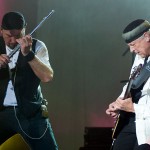
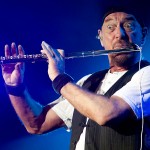
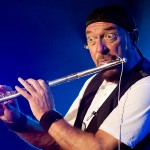
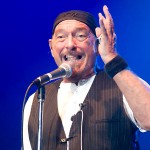
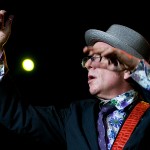
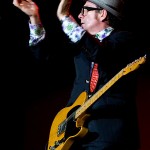
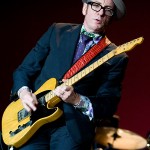
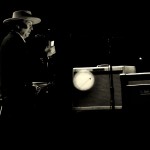
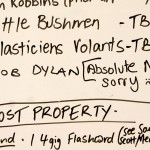
Leave a Reply